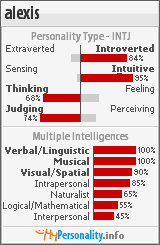So a recurring theme for me in India is, "I'm comfortable and happy being Christian and I have no intention of changing my religion ever." This is basically because of religious saturation. This is not just of long established religions, like Islam and Hinduism, but also separatist movements who claim to be the 'true' way and also popular religion (almost folk religion) which blur all kinds of categories and help soothe the most base of needs.
Extended post here It's these last two which I encountered this past weekend. Namdhari Sikhs are a group that split off from Sikhism in order to bring about a purer more orthodox understanding back into Sikhism in the mid-nineteenth century. We were able to visit their...for lack of a better word...compound and see a worship service (which involved paying respect to their leader who is quite ancient and sits in rather regal estate at the front of the worship hall).
Being a Christian, and a protestant especially, bowing to a person doesn't exactly sit well with me. It's not that I felt as if I was betraying God, I didn't. I did bow to the leader as a gesture of respect both to the leader and to the congregation. It was an act of cultural and religious sensitivity.
The popular religion location we visited was called Gugga Pir. I'm not entirely clear as to what person this place was a shrine to, only that there were several structures that had depictions (yes depictions) of various faith symbols (mosques, Sikh gurus, Hindu gods etc). In the main structure the icons to which people would pray and bring offerings, from what I understand, involved like a local muslim man who had a way with snakes and then Krishna blessing him. Offerings of wheat or other grains (or any kind of food) are brought by families and individuals after a wish has been granted (such as good harvest or animals being safe from snake bites during monsoon season). It was very much a shrine for the local people. In this case, local people means farmers from both small and large farms.
So there are religious groups, categories, and blurring of those categories. Now overlay that with political and socio-economic issues. The British when they came into the Punjab in 1847 (although certainly before this in other provinces) began taking census on religious rather than caste lines. Previously most Indians associated themselves primarily by caste and regional identities. So for review, most Punjabis consider themselves Sikh, then either Punjabi or their caste (like Jat) followed by the other. The British also instituted the reservation representation system...so majority groups in certain towns were guaranteed an elected official of their religious group. The exception to this is reservation for dalit or backward castes (which is different because it's based on caste rather than religious affiliation). So tensions can arise on religious or socio-economic lines (and are often interrelated).
It's no wonder there could have been so many riots prior to and during the British period, as well as during and after Partition (Everything in Punjab is dated from Partition as opposed to Independence as Partition had a huge impact on Punjabi society.).
And this is where I'm spending the next three weeks. I wonder how my understanding of these groupings and historical context will change once I'm in Delhi. This is my little self-experiment.


1 comment:
Dear Alexis:
Cultural saturation certainly changes your views, doesn't it? It's one thing discovering a country via academia; quite another actually living the culture.
Do you feel "different" in India? Do you think you might feel the same kind of "difference" in, say, a European country? After all, there are ions of time behind those cultures, as well. What do you think makes us feel that difference?
I'm really enjoying learning from you and look forward to your posts. I'm also looking forward to your return and hearing your experiences in person.
"See" you again soon!
Jane Wells
Post a Comment